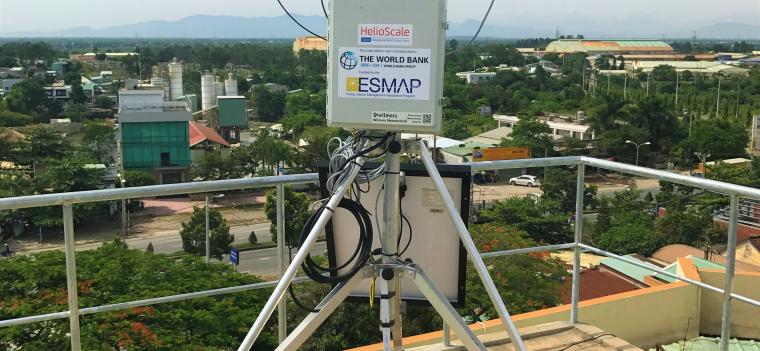News
- Vietnam is promoting solar energy across the country with the installation of five solar measurement stations across the country
- ESMAP’s Global Solar Atlas laid the groundwork for this solar measurement campaign
- The effort is part of a comprehensive World Bank support to Vietnam on renewable energy
Five new solar measurement stations were installed across Vietnam as part of the World Bank and the Electricity of Vietnam’s efforts to promote renewable energy (RE) in the country. The World Bank’s support for solar measurements and mapping is supported by the Energy Sector Management Assistance Program (ESMAP).
These stations will collect high-quality data on solar radiation and improve accuracy of estimates on solar resources. What’s more, the data will be made available for free online, to encourage and assist developers who are interested in building solar power plants.
The data and maps can be accessed via the Global Solar Atlas. After two years of the measurement campaign, Vietnam’s solar maps will be fully validated, of excellent quality, and ready for planning and prospecting purposes.
Ousmane Dione, Country Director for the World Bank in Vietnam says: “The costs of solar power generation are falling around the world. Vietnam is taking an important step in fostering an enabling environment for clean power generation that is quick to build.”
In addition to solar measurements and mapping, ESMAP is also assessing the potential of biomass and small hydropower. The biomass resource mapping is one component of the ongoing RE resource mapping project in Vietnam. It was launched in June 2015 with the objective to support the sustainable expansion of electricity generation from biomass by providing an improved understanding of the location and potential of biomass resources.
The small hydro mapping component was finalized in March 2017 and resulted in two main outputs: 1) recommendations for the design of a national GIS Database and 2) project specific spatial datasets, including the location of existing and potential small hydro projects.
Read the press release.
